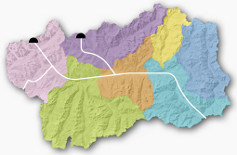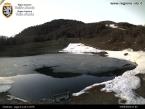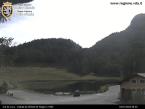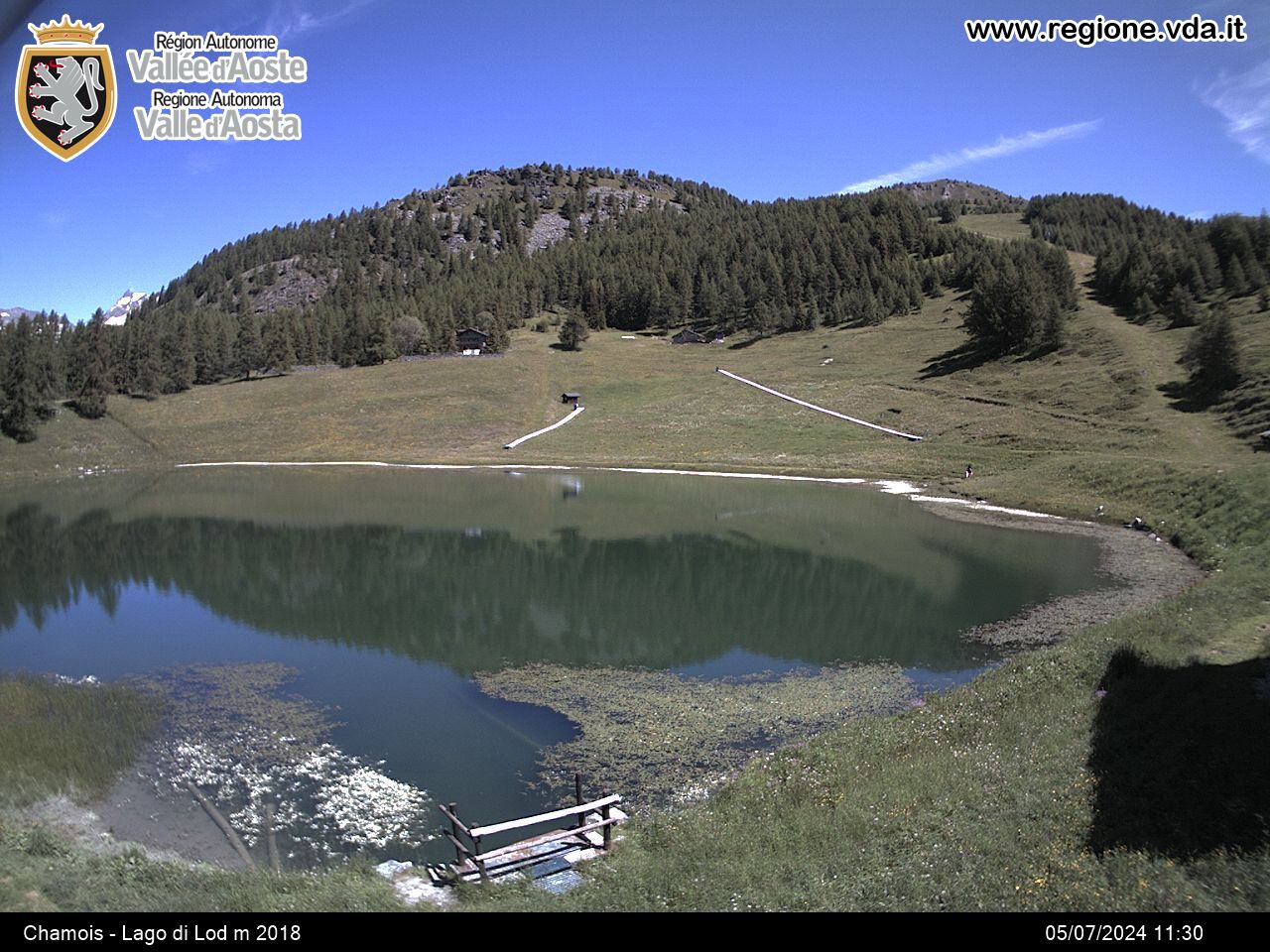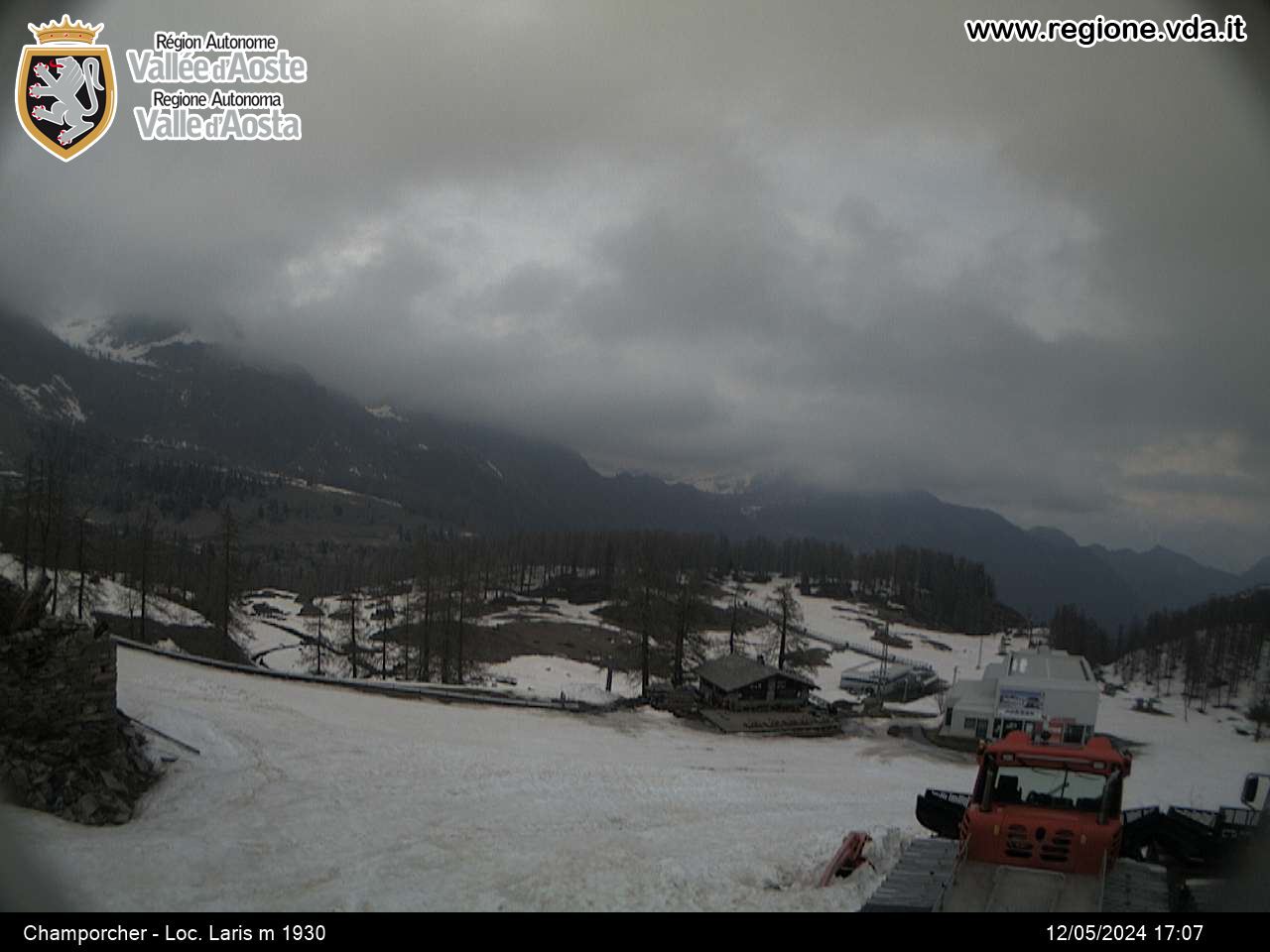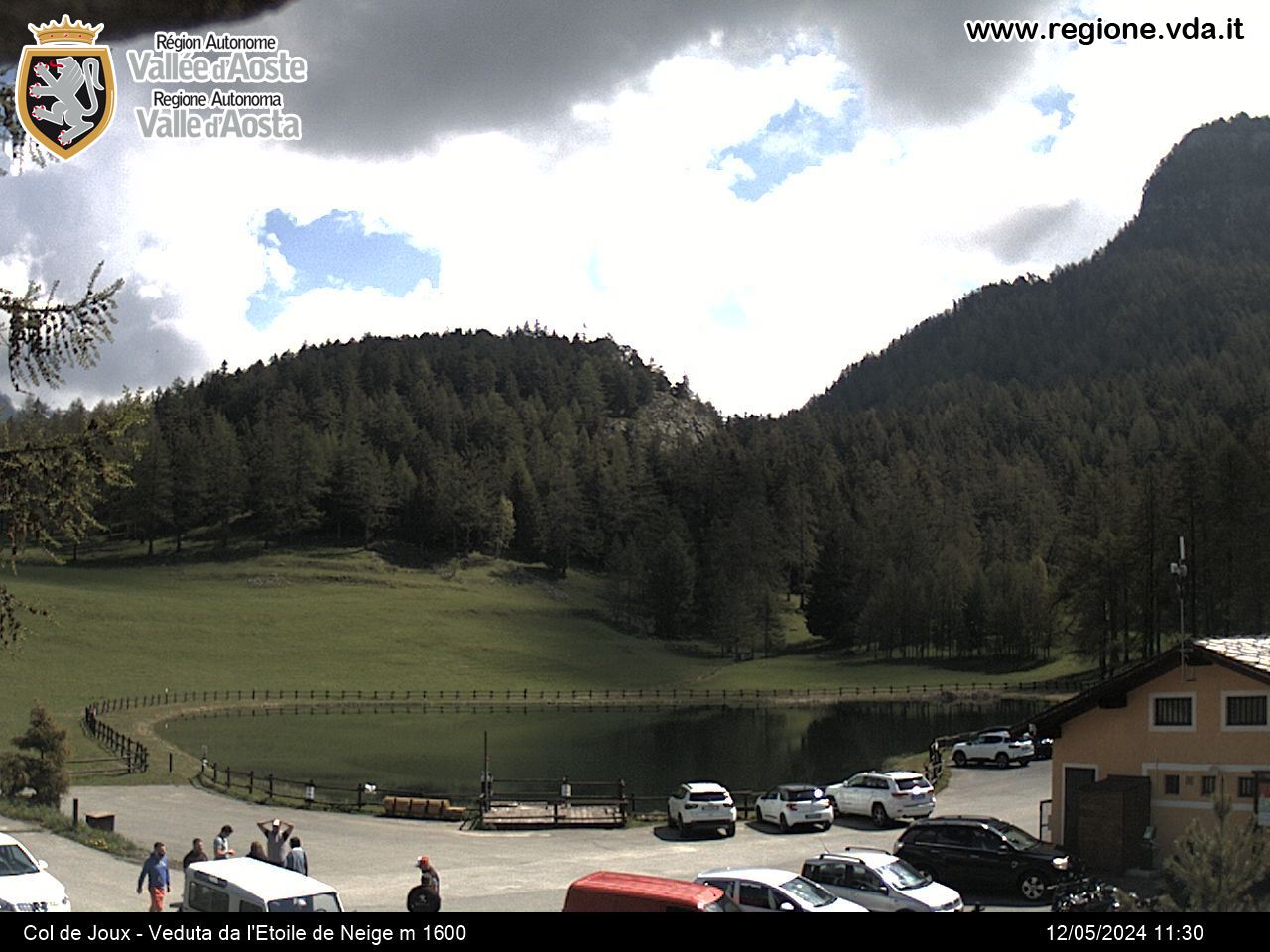Chapels and shrines
THE SHRINE OF GRUN
Situated in the heart of the hill of Saint-Vincent.
The building of the shrine is owing to an idea conceived around 1720 by the priest Pierre Bréan, who was already the deputy parish priest of the town from 1705 to 1713 and very devoted to Our Lady. With an agreement stipulated in 1725, the inhabitants of Grun and Valmignana committed to providing the land and materials necessary, while the reverend Bréan agreed to pay for the works and to furnish the chapel. The temple was completed in 1727, among the participants in the inauguration celebration there was also the abbot Jean-Baptise Perret, in 1770 he discovered the source of thermal water. The shrine very soon became a pilgrimage site and the votive offerings grew more and more, they were brought there by the faithful who had asked for the grace of healing or conversion.
Extended in 1864, the little church has a single nave, a choir, a sacristy and a small chancel. On the walls, alongside the Via Crucis, there are many votive offerings, on the brick wall, between four columns there was once a large painting of Mary, which was stolen in 1992. On a shelf there is a statue of Our Lady, in walnut, it was a gift from a devotee.
On the outside, the entrance, which is recessed from the brickwork, forms a portico. The fresco by Mus is noteworthy, it shows the Virgin welcoming the pilgrims with her arms open wide.
There were once many processions from the suburb of Saint-Vincent to the shrine of Grun: in particular, we recall that at the end of the month of May and the procession of “rain”, which was carried out to ask for the grace of rain or its cessation.
AMAY CHAPEL
It may have been built at the end of the 16th century or during the first decades of the 17th century. The titular of this little church is Saint Gratus, who is also the patron saint of the whole Diocese of Aosta.
The patron’s feast day, which is on the 7th of September was very important for the inhabitants of Amay, every year, on that date, a procession departed from that suburb and reached the district for the mass and vespers. In 1876, the bishop prohibited the celebration of the functions in the villages on the days coinciding with the feasts of the precept. The date of the celebration in the chapel of Amay was therefore moved and such was the disappointment of the inhabitants that, for over fourteen years, they refused to participate in the patron’s feast day at the church of the suburb. Later on, in 1908, the situation returned to normal, thanks also to the liturgical reformation, on the basis of which the patron’s feast days of the diocese were no longer considered precept feasts.
The chapel stands in front of the former inn where Primo Levi stayed and was arrested on 13 December 1943.
What’s more, this chapel was also the seat of a very ancient function: the administration of “Ru Courtaud” had mass celebrated there on the day of the commencement of the springtime works and the works for the maintenance of the canal.
On the facade of the little church, which is protected by quite a protruding roof, there is a large inscription “Saint-Grat, priez pour nous”.
The pure Baroque style altar is noteworthy, in its alcoves there are statues of Saint Gratus, Saint John the Baptist and a Madonna with Child. The Christ on the cross, crowned with a large halo and the large decorated and partially gilded chancel are also noteworthy.
CILLIAN CHAPEL
It stands in the heart of the village, on land that was previously occupied by an old community-owned press.
Completed in 1954, this family chapel, dedicated to the Innocent Saints, was built according to the wishes of the spouses Thérèse and Vincent Gorris, to honour a votive offering expressed during the Second World War.
The facade was frescoed by Italo Mus, a painter from Valle d’Aosta. On the north side, an invocation in French invites passers-by to reflect.
The interior, which is completely covered in pebbles extracted from the Dora, is quite cosy. In the choir, a large painting on wood, the work of Italo Mus, shows the Madonna, wrapped in a red cloak, in the act of crushing the snake. The two altars are also noteworthy (the original one on which the Sacred Heart is sculpted and that built according to the dispositions of the liturgical reform, facing the congregation) and the two windows showing the patron saints of the Gorris spouses, Vincenzo and Teresa.
FEILLEY CHAPEL
The chapel of the village of Feilley was built in accordance with the wishes of Philibert Clappey, who, in a deed dated 1645, agreed to provide the necessary funding for its construction. The temple, which was erected around fifteen years after the plague of 1630, was dedicated to St. Roch, who was always invoked against illnesses and serious epidemics.
The devotion of the inhabitants of Feilley and their affection for the chapel have made various maintenance interventions possible over time and have contributed to the creation of a veritable treasure of art, with certain praiseworthy statues that are now housed in the museum of the parish church.
Despite its small size, this chapel also has a chancel. The choir and the nave measure approximately four metres by four each, the first corresponds to the oratory from 1645, while the second, more recent one, is said to date back to 1747. There are various paintings on the walls, including the Via Crucis with writings in French, English and Portughese. The altar is covered in polychrome wood planks, on which we note a monstrance and two angel heads, in the upper section, between two columns, a beautiful canvas shows the coronation of the Madonna, with the Father, the Son and the dove representing the Holy Spirit, and Saints Roch and Sebastian at the sides.
The Christ on the Cross hanging on the beam between the choir and the nave is noteworthy, it is enriched by a large wooden rosary.
GLEREYAZ CHAPEL
It represents one of the few cases in Valle d’Aosta of a chapel dedicated to Saint Clement the pope, who is celebrated by the Church on the 23rd of November.
The construction of this chapel, which is dedicated to God, to the Virgin and to Saint Clement is owing to Clément Morize, who made a donation of a field for this purpose in 1627. Nonetheless, initially, given the high construction costs, only a small oratory was built. During the second decade of the nineteenth century, it was built and extended according to the wishes of the heirs of Morize, who committed to maintaining the building for the annual celebration of the patron’s mass. The chapel was blessed in 1828. Significant restoration works were carried out in 1884, when the current bell tower was built.
On the facade there is an inscription reading: “St. Clément, priez pour nouz”. The interior is simple, the ceiling comprises a vault consisting of two crossed arches. Above the altar there is a large canvas showing Saint Clement the pope.
In this chapel, the inhabitants of Glereyaz gather together during the month of May to recite the rosary.
THE CHAPEL OF LINTY
Situated at the western edge of the hamlet, the chapel appears to guard the Col de Joux.
It was built according to the wishes of the inhabitants of Linty in 1644. They decided to dedicate it to the Visitation of the Madonna and to celebrate the lauds there, a sung mass and the vespers on the day of the patron, the 2nd of July.
The facade is quite particular: pastel pink, without any inscriptions and ornaments, it has an atrium, as far as the entrance is concerned, it is recessed with respect to the external semi-oval brickwork. The small bell tower is characteristic, it has a bell on the protruding roof.
On the inside, the choir and the nave, measuring approximately four metres squared each, are two similar rooms, but they date back to different eras. Here too, in fact, as in other chapels, the choir is said to correspond to the original oratory, which was presumably extended during the second half of the eighteenth century.
The altar, which tends towards a Baroque style, is noteworthy, it has two tortile columns, at the sides of which there are several angel heads. In the alcove in the middle of the altar there is a beautiful statue of the Coronated Virgin, in polychrome wood, it probably dates back to the first half of the eighteenth century. The Via Crucis, which consists of paintings printed in Paris, was donated in 1878 by a lady from Linty.
PERRIERE CHAPEL
Dedicated to Saint James - the Great - whose feast day is celebrated on the 25th of July, this chapel is said to date back to the end of the 16th century. Given its position outside of the village and given the problems with water infiltration, it has always been subject to serious static problems, for which the inhabitants of Perrière have sought a remedy over time, providing proof of their faith and love for their chapel. In 1706 the interior was also enriched with 31 frescoed medallions, which are unfortunately no longer visible today as they are covered by subsequent paintwork.
The choir, which is older than the nave, corresponds to the original oratory and has four frescoes showing the Evangelists. In the upper part of the altar, in an alcove with a small glass door, there is a statue with the Virgin of the Miraculous Medal, dated 1850. The main beam, which is located between the choir and the nave is completely painted with floral motifs, and from it hangs a very beautiful Christ.
PRACOURT CHAPEL
Positioned on a rocky peak a short distance from the Roman bridge, it was originally an oratory wanted by the noble Mistralis family. In 1609, François Mistralis had this oratory extended and built a chapel there, with a characteristic octagonal shape.
The temple is dedicated to Our Lady of Mount Carmel, celebrated on the 16th of July, on that day a sung mass would be celebrated here and the vespers would be recited. Moreover, Pracourt chapel was the destination of an age-old procession on the third Sunday after Easter.
Towards the end of the 19th century, an image of Our Lady Help of Christians was painted on the facade. A small bell tower houses a little bell with the inscription “N.D. Carmes - 1911 - Haec dono Carolo Delapierre”. The walnut door and the two windows present a very solid stone frame. On the interior, the altar is noteworthy and above it, there is a fresco showing the Virgin of Mount Carmel and the pleading souls of Purgatory under her feet. The agony of Jesus and the Resurrection are painted on the walls.
SALIROD CHAPEL
Situated in the heart of the ancient village of Salirod, on the hill of Saint-Vincent. The act of foundation of the chapel, desired by the local population, dates back to 1774. Perhaps in that year an oratory was extended, which the hamlet probably had from the end of the seventeenth century. The chapel was dedicated to Saint Bartholemew, the patron saint of Salirod, whose feast day is celebrated on the 24th of August.
The walnut door is enriched with panels with geometric motifs. On the roof, a small bell tower houses a little bell, with an inscription: “Jesus Marie S. Joseph O.P.N.[sc. “orate pro nobis”] 1779”. On the inside, the vault of the choir recalls that of the church of Moron: the arches start from eight different points and seem to form a cradle, meeting in a central circle. The altar, which is made of painted wood with gilded features, is simple and linear and is surmounted by a wooden canopy with stuccos and gilding, the only one in the entire parish of Saint-Vincent. Some praiseworthy statues, once housed in the chapel, are now kept in the museum cell of the parish church.
THE CHAPEL OF TROMEN
Built according to the wishes of the inhabitants of Écrivin, Moulin and the other hamlets of the area on the banks of the Grand-Valey, to invoke the protection of a territory subject to river flooding.
Dedicated by its founders to St. Michael and, after its extension in 1747, to Our Lady of the Snow, the chapel, which was known in the past as a “Shrine”, was very important for the residents and in its favour there were many “legatines” (in particular, donations for the celebration of the masses). Nonetheless, the temple did not have great revenue. In fact, according to a document dated 1866, to come by the funds necessary for essential restoration interventions, the treasurer of the church called the heirs of the ancient founders and reminded them of a commitment they had undertaken in 1747.
The large fresco covering the facade with scenes of the Universal Judgement is noteworthy. The small bell tower on the overhanging roof is also characteristic.
THE CHAPEL COMMEMORATING THE PARTISANS IN AMAY
Situated along the road that leads to Col de Joux, a short distance from the inhabited area of Amay,
it was built during the 1950’s according to the wishes of the commander Edoardo Page who had been the chief of the 17th Matteotti Brigate during the Second World War.
During the years of the Liberation, many young partisans from Saint-Vincent, who died in combat, had been buried on the much-loved mountain, near Amay. Once the war was over, the chapel was built near that cemetery. The works, which commenced in 1951, ended in 1962. The stones used were taken from the local stone quarries, while the cement was transported on the back of donkeys from the bottom of the valley.
With its cone section bell tower, the temple, which is solid and austere, has a gracious harmony in its forms. A plaque on the facade reads: “Ai caduti per la libertà, 9-9-1943 + 25-4-1945”. Access to the temple is via the portico, the interior, with a single nave, is very sober. The fresco by Lucio Bulgarelli is brimming with significance, “Libertà 1961”, it represents some human figures, a ball of fire and a rainbow, the symbol of peace.
In 1995, to mark the 50th anniversary of the resistance, the liberation and independence, a plaque was positioned in the park in front of the chapel to commemorate the arrest of Primo Levi, Vanda Maestro and Luciana Nissim, which occurred in Amay on the 13th of December 1943 and ended with the deportation of all three of them to Auschwitz. The same plaque features the poem by Primo Levi “Se questo è un uomo” (If this is a man).










